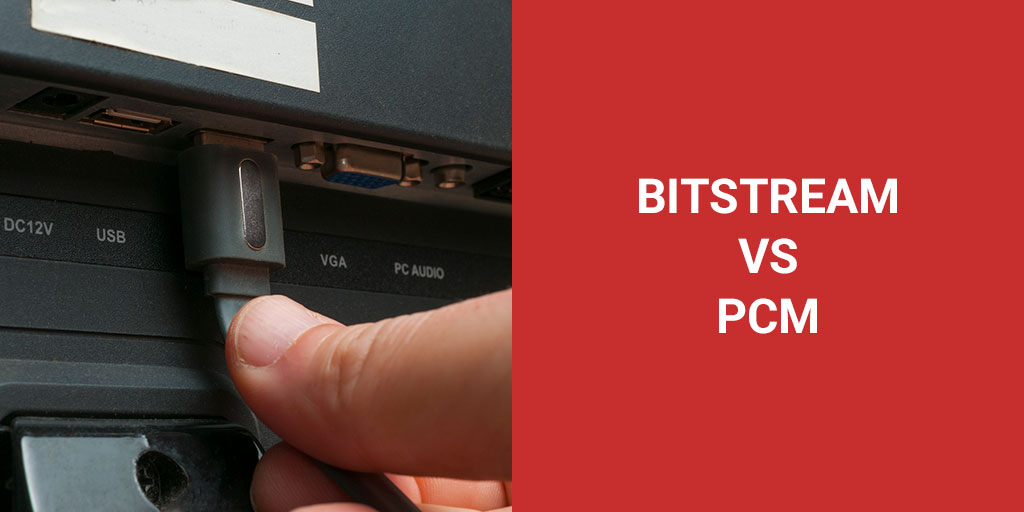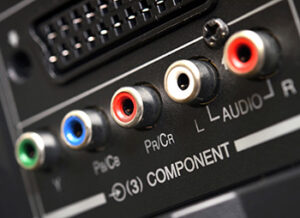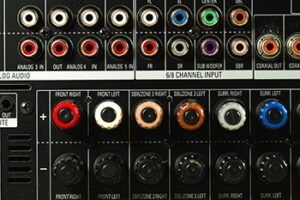When you are setting up your home entertainment system, you will need to choose which audio output to use for transmitting audio from your player (your TV or Android TV box) to your receiver (your speakers or headphones). The two main options you can expect to see are bitstream and PCM.
What is the difference between bitstream and PCM and which one should you choose? We’ll be addressing both of those questions in this article; what exactly does each audio format do and which one is likely to be best for your setup?
Spoiler alert! Both provide excellent audio output, and most people won’t be able to hear the difference between the two. Bitstream is the more up-to-date audio output and is recommended in most circumstances, but some older devices may not be compatible with bitstream and there are some specific circumstances in which PCM could be a better option. Read on for more.
What Is PCM And How Does It Work?
PCM stands for pulse code modulation, which refers to an algorithm that devices use to represent analog waves. PCM technology has been around for more than 100 years and is used in older technologies such as radio, so almost all modern devices are compatible with PCM audio transmission.
PCM takes analog audio signals and converts them into uncompressed digital signals for your speaker (receiver) to receive and decode. This means that your audio is decoded by your transmitting device, such as your Android TV box, so the quality of your audio depends on the quality of that device, but this type of transmission will work with almost all audio devices.
Another result of the audio being uncompressed is that you need quite a bit of bandwidth to manage the transmission. This is not a problem for an HDMI cable, but if you are using a digital optical cable or a coaxial output cable the large size means that only two PCM audio channels may be transferred. This can put a ceiling on the quality of the sound you can achieve, and also means that the audio transfer is too heavy to send to wireless devices.
If you are sending a direct PCM transmission via cable, though, it moves quickly and you can eliminate any audio lag. This is one of the reasons why PCM is the best option if you want to listen to supplementary audio tracks such as audio commentaries or PIP audio.
In short, you should use PCM when:
- You are using an older device that does not support bitstream
- You are watching something for which audio lag could be a significant problem
- You want to listen to secondary audio tracks such as audio commentaries
That being said, if you have a bitstream-compatible device and you set it to PCM for standard audio, most people won’t know the difference. Only audio buffs will be able to tell that you haven’t chosen the optimal setting; however, it won’t work if you are trying to send audio to a wireless speaker or headphones.
What Is Bitstream And How Does It Work?
Bitstream is the second standard audio output, and it is a binary sequence algorithm that takes audio and translates it into digital bits, and then compresses it before sending it to your audio receiver to be decoded and played. Bitstream activates your receiver to detect any compressed outputs and uncompress them according to the commands included in the stream.
This works with more modern audio devices that have post-processing functionality. Bitstream is compatible with all the major high-definition audio formats including Dolby, Dolby Digital, Plus, EX, TrueHD, DTS, DTS ES, Atmos, DTS 96/24, DTS HD-Master Audio, and DTS X.
The major advantage of using bitstream is that it compresses the audio transmission which makes the signal lightweight enough to be sent wirelessly, making it ideal for wireless speakers and headphones. When wired, it is best transferred via HDMI.
The major issue with bitstream relates to secondary audio formats such as audio commentaries. When sending secondary audio formats to high-definition devices, the audio of these supplementary tracks will be limited to standard definition because bitstream is specifically designed to deliver surround sound without the need to rely on secondary audio.
Still, unless you are an audio commentary expert with a keen ear for sound, bitstream is probably the best audio sequence for your new smart TV and high-end speakers.
In general, you should use bitstream when:
- You want to achieve surround sound with modern technology
- You want to use wireless speakers or headphones
While most modern tech is designed to work with bitstream, most items are still PCM-compatible. Unless you want to use wireless speakers, you may well not notice the difference between PCM and bitstream.
Should I Use PCM Or Bitstream?
The choice to use PRM or bitstream may be forced on you due to compatibility, but if it isn’t, your choice may just come down to personal preference. Nevertheless, consider the following when making your decision.
Compatibility
PCM is compatible with almost all tech but probably will not function well with wireless devices. Bitstream is compatible with higher-end and more modern players that support surround sound, as well as wireless devices.
Audio Files
Files are decoded by the player and sent uncompressed to the receiver so that the audio arrives with no lag with PCM. Meanwhile, bitstream encodes and compresses audio files for the receiver to decode, which allows the process to create a surround sound format.
Secondary Audio
PRM transmits both primary and secondary audio files in the highest resolution possible. Bitstream treats secondary audio files differently and they may not be transmitted in the same quality.
FAQs
What is the difference between PCM and bitstream?
The main difference between PCM and bitstream is where the audio is decoded. When using PCM, the audio is decoded by the signal-sending device, and an uncompressed audio file is then sent to the receiving device. With bitstream, audio files are compressed before they are sent to the receiving device, where they must be decoded.
This has a few implications. PCM may offer less audio lag when transferred via cable because there is no decoding, but PCM transmission tends to be too heavy to be sent wirelessly so so it doesn’t work with wireless speakers and headphones. Also, while PCM transmits secondary sound files in the way that they were intended, a bitstream may send these files in standard definition while the main audio file is in high definition. It can still provide surround sound, though.
Most listeners will not be able to detect the difference between audio transmitted via PCM and bitstream in most circumstances.
Should I set my TV to PCM or bitstream?
Unless you are using wireless speakers, it doesn’t matter if you use PCM or bitstream; however, if you are using a bitstream-compatible receiver, that is generally the recommended option. For wireless speakers you should also use bitstream, while older devices may only be compatible with PCM.
What does PCM stand for?
PCM stands for pulse code modulation, which is an algorithm that represents analog audio waves. It was used in early radio and continues to be a popular form of audio transmission today.
Are PCM and LPCM the same?
No, PCM and LPCM are not the same. LPCM stands for linear pulse code modulation, and it can be stored in different resolutions (e.g. 16 or 24 bit) and with different sampling frequencies (e.g. 60 or 120 kHz). This makes it significantly more sophisticated than PCM.
Looking for a great Android TV box to deliver top-quality audio? Read our list of the most important features when choosing an Android TV box.
The Verdict
When you start looking at the advanced audio settings for your home cinema, it’s not uncommon to be left scratching your head when it comes to the difference between PCM and bitstream and the question of which one you should use. In most cases, it doesn’t matter, and you will receive excellent audio either way.
It will matter if your devices are not compatible with one of the options, obviously. Older or cheaper tech may not be bitstream compatible, in which case you should use PCM, whereas wireless devices need the lighter transmission offered by bitstream.
If you have a modern, high-end device that supports bitstream, it is a good choice. It is designed to produce surround sound audio without the need to rely on secondary audio files. This means that it can make the sound better even when you are watching older films.
What to read next? Our review of the best soundbars to use with Android TV boxes and smart TVs.






